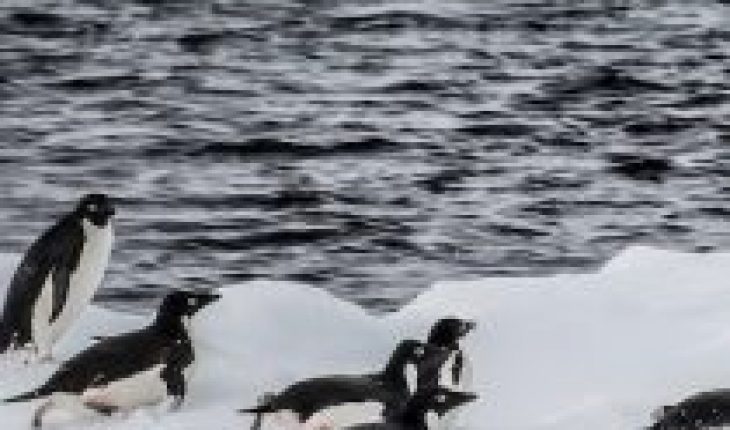
Krill (Euphausia surpassed) is a small crustacean very abundant in Antarctic waters and that forms the basis of feeding marine predators such as fish, whales, seals, sea lions and Antarctic penguins, being listed by the Commission for the Conservation of Antarctic Marine Living Resources (CCRVMA, or CCAMLR), based on existing knowledge, as “a key species of the Southern Ocean ecosystem”.
The krill fisheries are regulated by the CCAMLR and had been considered a low-impact practice, as the amount obtained from this resource was believed to be minimal compared to its estimated abundance. But in today’s climate scenario, the possibility of having unknown impacts on the ecosystem appears, adding to a spatial and temporal concentration of catches in specific areas of the Antarctic Peninsula, thus increasing the risk of generating competition for food between the fishing fleet and krill-dependent organisms.
Currently, CCAMLR is developing alternative krill fisheries management strategies, which will have capture rates proportional to krill availability over time and the requirements of its predators.
Papua penguins near Gabriel González Videla. Foot: Harry Diaz INACH
It is precisely in this context that researchers Lucas Kroger, Francisco Santa Cruz and César Cárdenas, of the Chilean Antarctic Institute (INACH), and Magdalena Huerta, of the Southern University of Chile, published in the journal Ambio an article that assesses the variability of bearded and papua penguin populations against krill research and weather conditions.
“This study was motivated by the need to verify the impacts of krill research, particularly on gender penguins Pygoscelis which are very krill-dependent and have undergone significant reductions in the Antarctic Peninsula,” says Dr Lucas Kroger, researcher at INACH and one of the authors of the text.
They were also able to see that there is a variation in penguin populations “which is associated with warmer winters, less ice and high fishing productivity, i.e. years when fishing productivity was high and followed a low-productivity winter and populations had a reduction in the number of reproductive partners in the following year”, adding that this serves as a support for the CCAMLR’s plan to change the management of the indicating that in warmer winters catches of this resource should be smaller.
For the purposes of the study, they reviewed historical krill sampling data (before 1970 to 2017) confirming that krill density is declining in certain sectors of the Antarctic Peninsula as a product of warming. This is associated with lower phytoplankton productivity and therefore there is less food availability for krill, which will grow and reproduce less. “While it is unclear whether fishing may be contributing to the reduction of krill biomass, it is likely that, under certain environmental conditions, it is reducing the availability of krill for penguins,” says Kr.
They also used databases of penguin population counts and estimates from the Mapping Application for Penguin Populations and Projected Dynamics platform, NASA and NOAA climate databases, and CCAMLR fisheries figures.
Reduction of Antarctic penguin populations
As already mentioned, the decrease in krill density can mean population reductions for those species that are ins flexible in their diet and that feed almost exclusively on this resource, such as the bearded penguin that suffered significant declines in the Antarctic Peninsula. “Some populations fell by more than 50% compared to the 1980s and 1990s,” confirms Dr. Kroger.
They warn of drastic reductions in these populations on Elephant Island and south Shetland, results that are based on previous studies. “Reduction is a more dominant trend for bearded populations, but there are papuan populations that decrease, are stable or increasing. On the other hand, in the Bransfield Strait and the Gerlache Strait, where krill fishing has increased considerably over the past decade, is where they may be most vulnerable to the synchronized effects ofclimate and fishing,” he describes.
The importance of this study and its impact
Scientists presented preliminary results of this study at the working meeting of Ecosystem Monitoring and Management (WG-EMM) of the CCAMLR held last year in France. “Our results coincided with those presented by NOAA (US) researchers, which elevated discussion about the importance of developing an even more precautionary form of krill management based on new evidence and ultimately triggered a plan to develop a krill research management strategy in Antarctica that is being worked on” , says INACH researcher Dr. César Cárdenas.
In the future, it will be very relevant for Kroger to understand the spatial scales on which krill fisheries affect penguin populations, i.e. to know in which specific sectors the reductions are related to increased fishing or warming. Dr. Cárdenas agrees and adds that “this attaches even more importance to the proposal of a marine protected area in Dominio 1, on which Chile and Argentina have been working since 2012 and which seeks a number of conservation objectives, including krill”. For Cardenas, the proposal can also serve as an instance that goes in conjunction with the new krill research management strategy and thus drive it more sustainably, protecting fragile Antarctic ecosystems.
INACH is a technical body under the Ministry of Foreign Affairs with full autonomy in all matters related to Antarctic affairs and has among its missions the incentivize the development of scientific, technological and innovation research in Antarctica, the strengthening of Magellan as a gateway to the White Continent and promoting knowledge of Antarctic subjects to citizenship.





